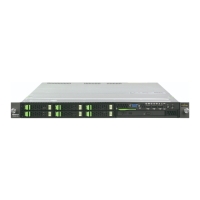2-44 SPARC Enterprise Mx000 Servers XSCF User’s Guide • January 2012
2.2.3 LDAP Administration
LDAP administration is used to specify items relating to LDAP clients. The LDAP
server, bind ID, password, baseDN and so on are set. In the LDAP server, the XSCF
user information is managed.
Note – This section does not cover LDAP configuration and administration. An
administrator who is familiar with LDAP should perform the LDAP design. For
details on adding user information to an account on an LDAP server, see the
Administration Guide.
TABLE 2-5 lists terms used in LDAP Administration.
TABLE 2-5 LDAP Administration Terms
Term Description
LDAP Abbreviation for Lightweight Directory Access Protocol.
LDAP is a protocol used to access directory databases in TCP/IP
networks.
baseDN Abbreviation for base Distinguished name.
Under LDAP, directory information is in a hierarchical structure. To
perform a search, specify the subtree to be searched in the hierarchical
structure. To do so, specify the identification name (DN) of the top of the
target subtree. This DN is referred to as the search base (basedDN).
Certificate chain List of certificates including a user certificate and certification authority
certificate. OpenSSL and TLS certificates must be downloaded in advance.
TLS Abbreviation for Transport Layer Security. This is a protocol for
encrypting information for transmission via the Internet.

